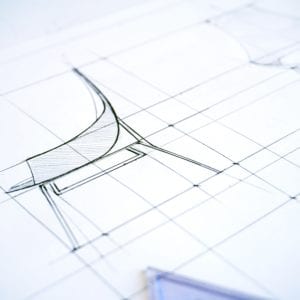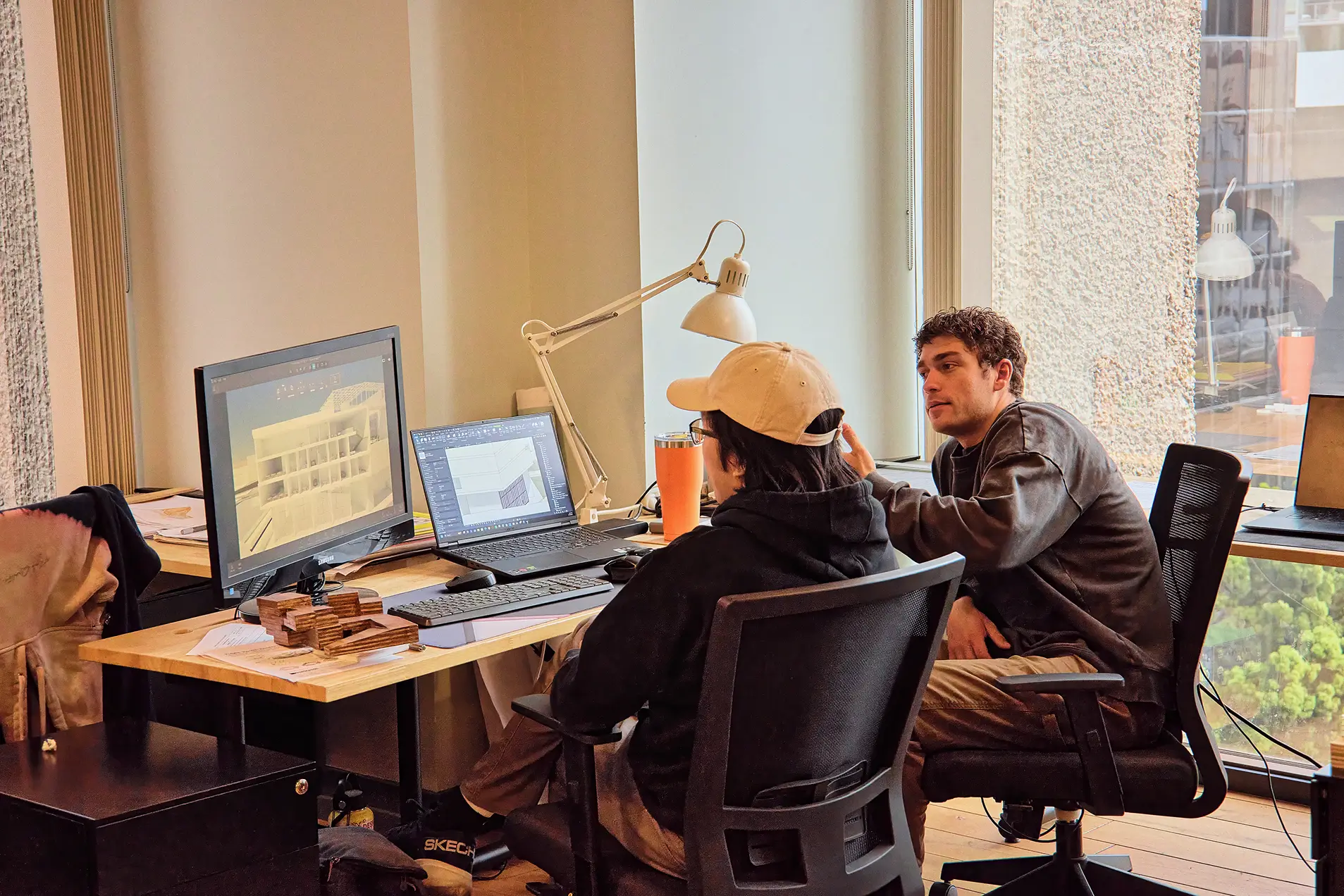What Is Product Design?
Before we begin to discuss the definition of product design and answering the question “what is product design?”, it is important to reevaluate the definition of a ‘product’. Up until recently, the term was used only in relation to something material and often found in a brick-and-mortar store. However, ‘product’ and the product design process now also applies to digital products; modern product examples include websites and phone apps. There are even product designers called UX designers that specifically focus on usability of the digital product. Keeping this information in mind, building great products consists of many elements, with the design features being one of the most important qualities – from seamless digital applications to the functionality of an executive office chair, every successful product starts with a great design.
Whether it is designing state-of-the-art audio equipment or developing complex medical diagnostic systems, the field of product design spans over numerous industries, including healthcare, lifestyle, interior design, automotive, and many more. In this article, we’ll explore the definition of product design, as well as the role of a Product Designer, including job outlook, skills needed and industry statistics.
Defining Product Design: Understanding The Industry
In an era where the only constant is change, our culture as consumers is always evolving. With technology playing an increasingly central role in our daily lives, we expect everything to be available at the push of a button – and as customized an experience as possible. Whether using our smartphones to order food or browsing an app for a new home, we have become reliant upon different forms of technology to satisfy a myriad of needs. So how does product design fit into the way we consume goods and services?
Product design as a verb is to create a new product to be sold by a business to its customers. Designing a product is a very broad concept, it is essentially the efficient and effective generation and development of ideas through a design process that leads to new products. Thus, it is a major aspect of new product development. However, many business experts will agree that product design is the process of identifying a market opportunity, clearly defining the user’s needs and problem, developing a proper solution for that problem, and validating the solution with real users. When considering high-quality products or features, designers must understand business objectives, know the elements of a good design, and be able to answer the following questions:
- What problem are we solving?
- Who has this problem?
- What do we want to achieve?
Answering these questions allows design engineers to understand the user experience of a product as a whole, and not simply the interaction (feel) or visual (look) part of a design. These design principles apply to both physical products and digital product design.
Finding a solution to a problem includes the following five basic phases:
- Research: In order to develop a deeper understanding of your consumer audience, you must conduct and gather research to cater to the people for whom you are designing your product/service for. This is crucial.
- Define: Create a point of view that is based on user needs and insights.
- Brainstorm: In order to generate a wide range of potential solutions, design thinking and brainstorming sessions are required during this phase of product development.
- Prototype: After narrowing down design concepts, build a prototype (or series of prototypes) to test your hypothesis. Creating a prototype allows the designer to discover if they’re on the right track, and it often sparks different ideas that you wouldn’t have come up with otherwise to further streamline product development. However, depending on the product, physical prototyping tools can be very expensive so digital design can be significantly more cost-effective in the beginning stages of product design and problem-solving pain points within the design.
- Test: Return to your users for feedback.
As we’ve discussed, creating and building great products (and great brands) is contingent upon forward-thinking design implementation. Today’s businesses essentially rely upon their product design team to give their products or services an aesthetic and functional edge over their competitors while maintaining relevance in a world where technological advancement never sleeps.
A Product Designer helps to define the experience and interface of products (also known as ‘User Experience’ or UX and ‘User Interface’ or UI) while defining the brand and marketing strategy around those products. Essentially, it is creating a brand and executing that identity through every phase of the product or services’ lifespan and design strategy – aesthetically, experientially, tactilely, ergonomically, and technologically speaking, of course.
Did You Know…
Q: What is the difference between UX Design and UI Design?
A: While User Experience (UX design) is a conglomeration of tasks focused on human-centered design aka the optimization of a product for effective and enjoyable use, User Interface Design (UI) is its complement, addressing the look and feel (visual design) as well as the presentation and interactivity of a product.
What Is The Role Of A Product Designer?
Due to the vast (and ever-changing) demands of the Product Designer, it is by definition a rather elusive job role to describe: because the design process of product development keeps changing, the roles of people (and consequent skills sets) continue to evolve, thus encompassing a wider scope of responsibilities. Because of this, it is important that anyone entering the field have the proper hands-on training with a respectable design program. While Visual Designers address the look and feel of a product, UX or UI Designers deal with wireframes and user flows. However, the Product Designer is an individual who can take a high-level concept and see it all the way through, from inception to completion.
Responsible for designing nearly everything we use in our daily lives, Product Designers utilize their creativity, technical knowledge and keen eye for detail to design and implement new and innovative products and services, as well as streamlining existing products by improving their aesthetic appeal and functionality. In order to succeed in product design, you must understand the relationship between art, technology, and science. As a Product Designer, your responsibilities will include planning, designing, and modeling products, creating prototypes and conducting research, as well as rigorous product testing.
Here is a general outline of the Product Designer’s work process:
- Research & Consultation: Initially, you’ll be expected to work from your client’s specs, liaising with your client and staff to understand the criteria for the product before brainstorming concepts and prototypes. You’ll also need to conduct a fair amount of research during the product vision and development phase.
- Brainstorm: After the initial brainstorming phase, you will be required to produce a series of preliminary sketches/drafts and other presentations to outline your design ideas.
- Design: Once your preliminary ideas have been approved, you will begin to create detailed designs; typically this entails computer-aided design (CAD) software as well as producing technical specifications, which will detail everything in the design system from required materials to product costs.
- Prototype Development: The next phase of the process entails prototype development of the final product, which may involve 3-D design, sketches or state-of-the-art computer software, depending on the complexity and demands of the project.
- Prototype Testing: Finally, you’ll be responsible for testing the prototype. This may require a hands-on approach or computer-simulated testing, depending on the nature of your project. During the final phases of prototype testing, you’ll need to make important design-related decisions, such as budget constraints, and in some instances, environmental impact as well as health and safety regulations.
Once the prototype has been designed, developed and tested, you’ll be required to present the final product design to the client for their approval. Unless the client is dissatisfied with the results (and changes need to be made), this is the last phase of a product design project’s life cycle.
A Product Designer’s Role May Also Include:
- Wireframing
- Coding/Prototyping
- Creating style guides and patterns
- Conceptualizing product definitions and naming conventions
- Building requirements documentation with other engineers and designers
- Manning support and helping fill tickets to better understand customers from the front-lines
- Any number of other things to help tie up loose ends on the design side
Product Design: Education & Job Outlook
Education
According to the Bureau of Labor Statistics, Product Designers (also known as Industrial Designers) require a bachelor of arts degree in product design, industrial design, or engineering for entry-level industrial design jobs. Most industrial design programs include courses in drawing, computer-aided design, and drafting (CADD), and three-dimensional modeling, as well as courses in business, industrial materials, and processes, and manufacturing methods.
Many Product Design programs provide students with the opportunity to build a professional portfolio of their designs by collecting examples of their designs from classroom projects, internships, or other experiences. Students can use these examples of their work to show their creativity in the idea generation phase and demonstrate their design skills when applying for jobs and bidding on contracts for work.
It is also important for designers to have an electronic portfolio with examples of their best design projects. Gaining relevant work experience is also a crucial step towards finding a successful career in the competitive world of product design. Internships are therefore a great way to develop your skills and improve your portfolio.
Learn more about NewSchool’s Product Design program here.
Skills & Training
If you are considering a career in Product Design, possessing the following skills is essential to your success:
- Analytical Skills: Industrial designers use logic or reasoning skills to study consumers and recognize the need for new products.
- Artistic Ability: Industrial designers sketch their initial design ideas, which are used later to create prototypes. As such, designers must be able to express their design through illustration.
- Commercial and Entrepreneurial Expertise
- Communication Skills: Possessing effective communication skills is essential in this role
- Computer Skills: Industrial designers use computer-aided design software to develop their designs and create prototypes.
- Creativity: Industrial designers must be innovative in their designs and how they integrate existing technologies into their new product.
- General & Specialized IT Skills, such as computer-aided design (CAD) and other computer software programs
- Interpersonal Skills: Industrial designers must develop cooperative working relationships with clients and colleagues who specialize in related disciplines.
- Mechanical Skills: Industrial designers must understand how products are engineered, at least for the types of products that they design.
- Presentation Skills: One of the core phases of product development entails detailed presentations to clients; therefore, possessing strong presentation skills is crucial to this role.
- Problem-Solving Skills: Industrial designers determine the need, size, and cost of a product; anticipate production issues; develop alternatives; evaluate options; and implement solutions.
- Teamwork Mentality: As a Product Designer, you will be collaborating with a variety of staff and clients; therefore, you must be comfortable working within a team dynamic.
- Time Management Skills: In addition to adhering to stringent deadlines, designers must also have the ability to take initiative and work independently.
- Visual & Spatial Awareness: In addition to creative/artistic abilities, having a keen sense of visual/spatial awareness is crucial to your success in this career path.
Understandably, you will need to be confident using complex computer software, such as computer-aided design (CAD) tools. You will do most of your training ‘on-the-job’, developing your CAD skills and technical knowledge under the supervision of an experienced product designer. However, you may occasionally be required to attend in-house training courses.
As you progress in your career and move into project management, your company may even sponsor you to complete a relevant professional qualification, such as an MBA. You may also wish to take part in workshops offered by external organizations, colleges or universities.
Many product designers eventually progress into project management roles. Another option is to work as a freelance product designer, where you will work for different companies on a variety of projects.
Job Forecast
According to the Bureau of Labor Statistics (BLS), employment of arts and design occupations is projected to grow 4 percent from 2016 to 2026, slower than the average for all occupations, adding about 33,700 new jobs. More workers will be needed for their design thinking and product strategy skills to meet the growing demand for animation and visual effects in video games, movies, television, and on smartphones, as well as to help create visually appealing and effective layouts of websites and other media platforms.
Career Possibilities
Jobs where your degree would be useful include:
- Advertising Art Director
- Automotive Engineer
- Graphic Designer
- Materials Engineer
- Product Manager
- Production Designer (theater/television/film)
- Purchasing Manager
- Stylist
Studying product design gives you broad theoretical knowledge and practical skillset you’ll need to use production methods and materials creatively.
Job options:
Jobs directly related to your degree include:
- Clothing/Textile Technologist
- Color Technologist
- Exhibition Designer
- Furniture Designer
- Industrial/Product Designer
- Interior decorator & Spatial Designer
Career Advancement
Experienced designers in large firms may advance to chief designer, design department head, or other supervisory positions. Some designers become instructors in design schools or in colleges and universities. Many teachers continue to consult privately or operate small design studios in addition to teaching. Some experienced designers open their own design firms.
Connect with NewSchool’s Enrollment Team today to learn more about our Product Design program and how we can help you achieve your academic and professional goals!

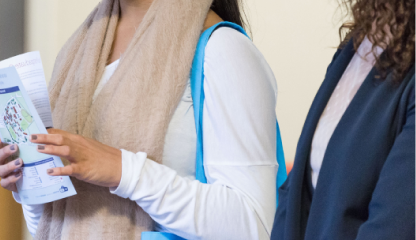
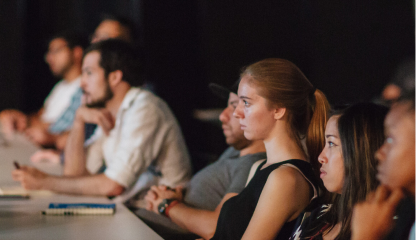
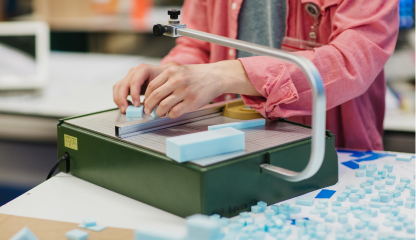
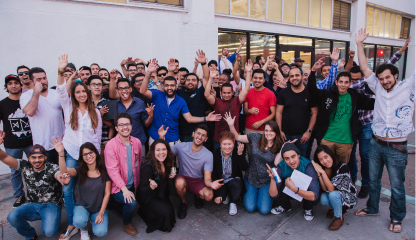



 619-684-8800
619-684-8800